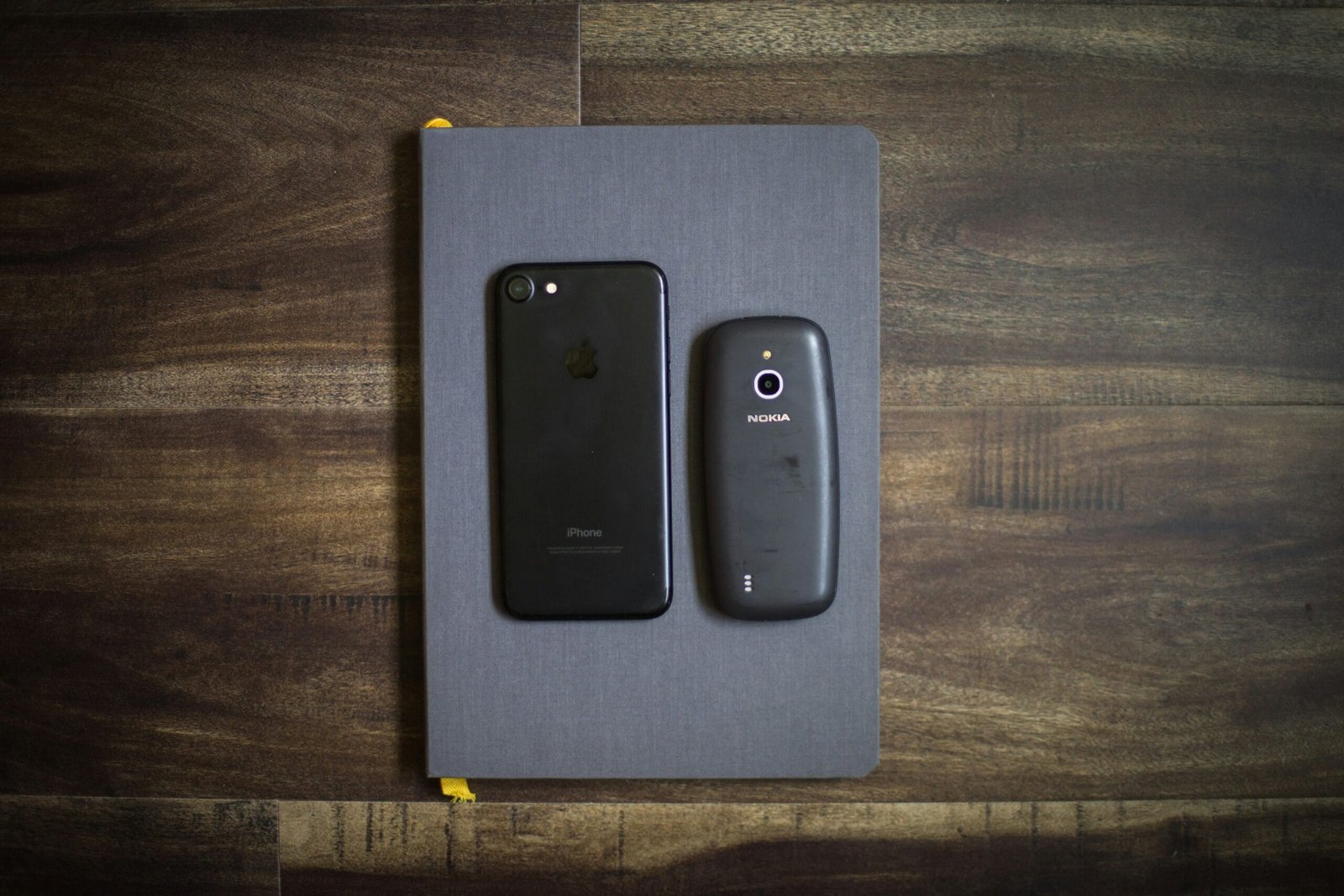
Introduction to Smartphone Covers
The widespread adoption of smartphones has led to the creation of a myriad of accessories, among which smartphone covers stand out as essential. These protective cases are primarily designed to shield devices from various forms of damage, including scratches, drops, and general wear that can occur during everyday use. As mobile technology evolves, so too does the diversity of smartphone covers, which come in an array of materials and designs tailored to meet consumers’ preferences and needs.
Smartphone covers serve several critical functions beyond just aesthetics. They are designed to absorb shocks and impacts, significantly reducing the risk of screen damage and operational failures. With a drop-protective cover, users can enjoy peace of mind, knowing their investment is less likely to incur costly repairs due to accidental falls. Additionally, these covers can also offer resistance to scratches and scuffs, preserving the pristine condition of the smartphone’s exterior.
The variety of materials used in manufacturing smartphone covers ranges from silicone and rubber to leather and hard plastics. Each material possesses unique characteristics, catering to different lifestyles. For instance, rugged cases made of tough plastics are ideal for individuals with active lifestyles, while sleek, minimalist designs made of leather may appeal to those valuing aesthetics and sophistication. The design options available also extend to colors and patterns, allowing for personalization according to individual tastes.
Despite the clear advantages associated with smartphone covers, it is crucial to consider the potential hidden side effects that may arise from their long-term use. As we delve deeper into this topic, we will explore the implications of prolonged cover usage and how they may impact device performance and user experience.
Physical Damage Prevention
Smartphone covers are designed to enhance the durability of devices by providing a significant layer of protection against physical damage. The benefits of using a smartphone cover are particularly evident when it comes to absorbing impact from accidental drops. Most smartphones are equipped with fragile glass screens that can easily shatter upon impact. A well-designed cover acts as a buffer, reducing the force that reaches the device, thereby minimizing the risk of cracks and other damage that might otherwise render a smartphone inoperable.
In addition to drop protection, smartphone covers also shield devices from scratches. Everyday activities, such as placing a phone in a pocket or bag alongside keys or coins, can lead to unsightly marks on the screen and body. A protective cover can mitigate these concerns, preserving the aesthetic quality of the device over time. Furthermore, many covers are made from materials that are resistant to wear, ensuring that they can withstand exposure to environmental factors without degrading.
Heat Dissipation Issues
The widespread use of smartphone covers is often seen as a measure to enhance the protection and longevity of devices. However, certain materials used in these covers can inadvertently hinder the natural heat dissipation process essential to smartphone performance. Smartphones generate heat as a byproduct of various functions, including processing data, running applications, and charging. Ideally, this heat should be allowed to escape freely into the surrounding environment to maintain optimal device functionality.
Smartphone covers made from synthetic materials such as silicone, rubber, and thick plastic can create a layer of insulation around the device. While they effectively protect against physical damage, their insulating nature can trap heat, leading to increased internal temperatures. This excessive heat can adversely affect the performance of the smartphone, causing it to lag or become unresponsive. High temperatures can also interfere with the device’s ability to perform efficient tasks, such as gaming or video playback, where processing power is maximized, and heat generation is intensified.
Moreover, prolonged overheating can have a detrimental impact on battery life. Lithium-ion batteries, commonly used in smartphones, are particularly sensitive to temperature fluctuations. Exposure to elevated temperatures can accelerate battery degradation, ultimately reducing the number of charge cycles and lifespan of the battery. In extreme cases, ongoing heat issues could lead to permanent damage to internal components, resulting in costly repairs or even the need for replacement devices.
When selecting smartphone covers, it is essential to consider materials that promote airflow and do not excessively insulate against heat. In this way, users can enjoy the protective benefits of covers without compromising the critical heat management that modern devices require for optimal operation.
Impact on Aesthetics and Resale Value
The use of smartphone covers has become ubiquitous in today’s technology-driven culture. However, the long-term effects of these protective accessories often go unnoticed, particularly regarding aesthetics and resale value. Over time, smartphone covers can accumulate wear and tear, leading to a diminished visual appeal. Scratches, discoloration, and material degradation are common issues that can arise from prolonged use, ultimately obscuring the sleek design of the device and giving it an unkempt appearance.
The initial functionality of a smartphone cover is to provide protection, yet this function frequently comes at the expense of aesthetics. As the cover continues to endure daily use, it may begin to develop scuff marks and wear on its edges. Such deterioration can detract from the overall elegance of the smartphone, making it appear outdated or poorly maintained, even when the device itself is relatively new. Consumers often find themselves reluctant to engage with a device that appears less appealing due to a worn cover.
Moreover, the state of both the smartphone cover and the device itself plays an essential role in determining their resale value. Many potential buyers prioritize cosmetic conditions before finalizing their purchase. A smartphone sporting a damaged or heavily worn cover may lead prospective buyers to question the overall upkeep of the device, leading them to negotiate a lower price or avoid purchasing it altogether. In contrast, a well-maintained smartphone, paired with an aesthetically pleasing cover, can substantially boost its perceived value in the resale market.
Consequently, while smartphone covers serve an important protective function, their impact on the aesthetics of the device and ultimate resale value cannot be overlooked. Careful consideration of cover materials and routine assessments of wear can help mitigate these effects, aiding in the retention of both visual appeal and market value.
Port and Button Accessibility
Smartphone covers are designed to protect devices, but their long-term use can lead to significant challenges in accessing essential ports and buttons. Many covers, particularly those that prioritize aesthetics or additional protection, can obstruct the functionality of these critical components. This obstruction often manifests in difficulty plugging in charging cables, headphones, or accessing SIM card trays, which can lead to user frustration.
One prominent issue relates to the design of smartphone cases, where the precise alignment and coverage of ports can vary greatly. For example, a poorly designed cover may impede access to the charging port, causing users to struggle with attachments while maintaining a proper power supply. Similarly, buttons for volume control and the power toggle may become less responsive if the cover adds excess thickness or misaligns their positions. As these features are pivotal to the overall usability of a smartphone, the impact of ineffective covers can be markedly negative on a user’s experience.
Users often find themselves adapting to these accessibility challenges imposed by their cases. This adaptation might include routine adjustments, such as removing the cover for charging or creative solutions, like using shorter cables. However, such workarounds can detract from the convenience associated with modern smartphones, which are meant to provide quick access to various functions and features.
Furthermore, user satisfaction can diminish when essential functionalities become cumbersome due to accessory design choices. As smartphones continue to integrate more features, the implications of inadequate case designs will likely increase. Enhanced awareness about the potential usability issues stemming from smartphone cover usage is crucial for consumers to make informed decisions regarding their device protection and functionality.
Potential Chemical Reactions and Allergies
The materials used in smartphone covers are diverse, encompassing plastics, rubber, silicone, and leather, among others. While these materials serve the primary function of protecting devices, they also raise concerns regarding potential chemical interactions, which may result in allergic reactions for some individuals. For instance, synthetic materials found in certain plastic covers can contain additives like phthalates and bisphenol A (BPA). These substances are known to negatively affect health when they leach out and come into contact with the skin.
An individual’s response to these materials varies significantly, with allergies or irritations often manifesting as rashes, redness, or discomfort. A common culprit, latex, can provoke severe allergy symptoms in sensitive users. Moreover, the prolonged exposure to smartphone covers made from cheaper plastics can exacerbate skin conditions, especially for users who frequently handle their devices. In such cases, exfoliation of skin or contact dermatitis might occur, prompting users to seek alternatives that are hypoallergenic and free from harmful chemicals.
Beyond skin reactions, users should be aware of the potential for chemical interactions between the cover and the smartphone itself. Certain covers may emit volatile organic compounds (VOCs), which can negatively impact air quality indoors. In specific conditions, these compounds can mix with sweat or moisture present on the phone’s surface, leading to residues that can irritate the skin further. Consequently, it becomes vital for consumers to carefully choose smartphone covers made from tested and approved materials that minimize such adverse effects.
Understanding the significance of material composition is crucial for long-term smartphone cover users. Conducting research on the materials used in covers and being vigilant for any allergic reactions can contribute to ensuring both skin and device safety.
Impact on User Experience and Ergonomics
The presence of smartphone covers significantly influences the overall user experience and ergonomics of device handling. Primarily, the size and weight of a smartphone cover can alter the way users interact with their devices. For many individuals, the added bulk from a cover may compromise the sleek design and lightweight nature that smartphones are intended to provide. Consequently, transitioning from a bare phone to one encased in a thick, heavy cover can lead to discomfort during prolonged use.
Grip is another critical aspect affected by smartphone covers. A well-designed case can offer improved tactile feedback and enhanced traction, reducing the likelihood of accidental drops. However, not all covers are created equal; some can make a device more difficult to hold securely, particularly if they possess a slippery surface or an unusual shape. This inconsistency can detract from a user’s enjoyment and confidence in their device, especially when navigating applications or engaging in activities that require precision, such as gaming or photography.
Comfort during use should also be considered. Long-term smartphone cover users may find that certain designs affect their hand positioning or create strain over time. For instance, bulkier cases can misalign a user’s fingers, leading to discomfort, particularly during extended durations of texting or scrolling. On the flip side, ergonomic cases designed with contours and support in mind can provide a more enjoyable experience, reducing hand fatigue and improving overall usability.
Ultimately, while smartphone covers serve a protective purpose, their impact on user experience cannot be overlooked. The balance between protection and usability must be carefully navigated to ensure that users derive maximum enjoyment from their devices without sacrificing comfort or ergonomics.
Cleaning and Maintenance Challenges
Smartphone covers serve an essential purpose in protecting devices from damage, yet they also require regular cleaning and maintenance. Over time, particularly with long-term use, these covers can accumulate dirt, dust, and grime, which may compromise their functionality and appearance. One of the primary challenges associated with smartphone cover maintenance is the difficulty in thoroughly cleaning certain materials. For instance, silicone and rubber cases tend to attract more dust and fingerprints, necessitating frequent cleaning to maintain their aesthetic appeal. Conversely, leather and fabric cases may require specialized cleaning agents, which can be less accessible and may not effectively eliminate all residues.
Additionally, the prolonged neglect of cleaning could lead to the growth of bacteria and germs. Studies suggest that smartphone covers can harbor significant amounts of harmful microbes. This phenomenon poses a health risk, as these microorganisms can transfer to the device itself and ultimately affect the user. Not only does a dirty cover detract from the overall user experience, but it may also become a source of anxiety concerning hygiene, particularly in shared environments or during flu seasons.
Moreover, neglecting the maintenance of smartphone covers can lead to deterioration of both the cover and the device. Over time, accumulated dirt can penetrate the case, causing wear and tear that weaken the protective barriers designed to shield the smartphone. This degradation may result in physical damage to the phone, such as scratches or internal issues due to exposure to moisture. Therefore, acknowledging the cleaning and maintenance challenges that accompany long-term smartphone cover use is crucial for preserving both the cover’s quality and the smartphone’s integrity.
Conclusion: Weighing the Pros and Cons
In evaluating the impact of long-term smartphone cover use, it is essential to consider both the advantages and potential drawbacks of this common accessory. Smartphone covers provide significant benefits, including enhanced protection against physical damage, improved grip, and personalization options. These features can contribute to longer device lifespan, reducing the need for costly repairs or replacements. Given the substantial financial investment in smartphones, the protective qualities of a cover can be a wise choice for many users.
However, as this blog post has illuminated, there are hidden side effects associated with prolonged use of smartphone covers that merit consideration. Over time, certain covers may become a breeding ground for bacteria and germs, promoting unsanitary conditions that could affect overall health. Additionally, some materials used in smartphone cases can lead to overheating, which can damage the device’s internal components and reduce its functionality.
Moreover, the habitual reliance on a cover may impact a user’s awareness of their device’s actual condition. Users might overlook signs of wear or impending device failure because the cover obscures the smartphone’s surface. Furthermore, while added bulk from certain covers can enhance grip, it may also hinder ease of use and portability, detracting from the device experience.
Ultimately, the decision regarding smartphone cover usage should be tailored to individual needs and lifestyle patterns. Readers are encouraged to assess their unique situations and how often they engage in activities that pose risks to their devices. Weighing the pros and cons carefully will enable users to make informed choices that best suit their personal preferences, device requirements, and safety considerations.
RELATED POSTS
View all


